Interview with Bob Shepardson
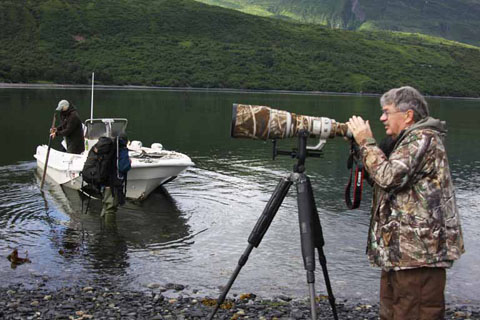
1. Hi Bob. How and when did you get started in wildlife photography?
Hate to admit it but I didn’t get started until the year before I retired, 2005. Sherry and I took our second trip to Yellowstone National Park. I was using a point and shoot to take a photo of a grizzly bear and this resulted in two decisions.
First I really liked taking photos of animals and a point and shoot was not the way to go. I missed the shot due to camera lag. When we got home I purchased my first digital SLR. Since then there have been several more. I tell Sherry they breed in our safe. Don’t think she believes me!
Second, which parks to visit as there are so many great national parks around the world. Each year we need to choose between Africa or the USA and then which park/s.
2. You have had the privilege of being able to visit most of Southern Africa on photo safaris. There is a lot of debate about which is better - self drive or guided safari and also Botswana versus South Africa/Namibia. What are your feelings here?
The first part of the question is easy to answer, while our first two trips were guided safaris; the last 4 trips have all been self-drive. In my opinion this is the way to go. You get to spend more time out and about photographing and you have much more flexibility on how long you stay at a location. For instance in March we spent 5+ hours with a pack of wild dogs in the Kruger Park.
Were we with a group, this might not have been possible. In addition a self-drive costs less.
The second part is far more difficult. We enjoy South Africa and Namibia a lot. The South African parks have been very good to us from a photographic standpoint, and they tend to be very well maintained. On the downside there are sometimes large groups at sightings, particularly in Kruger. Namibia has far fewer people and you’re often alone at a sighting.
The camps in Namibia are excellent, but the facilities outside the camps need some work. (Bring your own toilet paper). We have been very lucky with cheetah and leopard sightings in Etosha.
In Botswana we have not been as lucky and find Chobe to be poorly maintained making self-drive a bit of an adventure. Also our experience with animal sightings in Namibia and South Africa exceeds those in Botswana. Now this is only our opinion, I’m sure others may disagree.
Well Mario, if that sounds like a political statement I guess it is. Bottom line Etosha followed closely by Kruger with Sabie Sands in third place. If you’re desperate for leopards then Sabie becomes number one. The problem with Sabie Sands is that self-drive is not allowed.
3.a. You seem to favor Etosha in Namibia and the Kruger Park in South Africa so I would like to ask you some questions based on these two national parks. Do you have any favorite spots / waterholes for photography in the Kruger & Etosha?
In Kruger we like two areas a lot. The S28 between Crocodile Bridge and Lower Sabie and the H10 from Lower Sabie to Tshokwane. The S28 has been very good from a cheetah standpoint and on the H10 we’ve photographed all of the big 5 as well as civet, African wild cat and many of the plains animals.
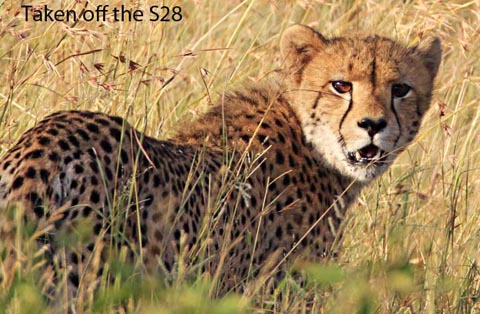
In Etosha our two favorite places are the Goas waterhole near Halali and the Chudob waterhole near Namutoni.
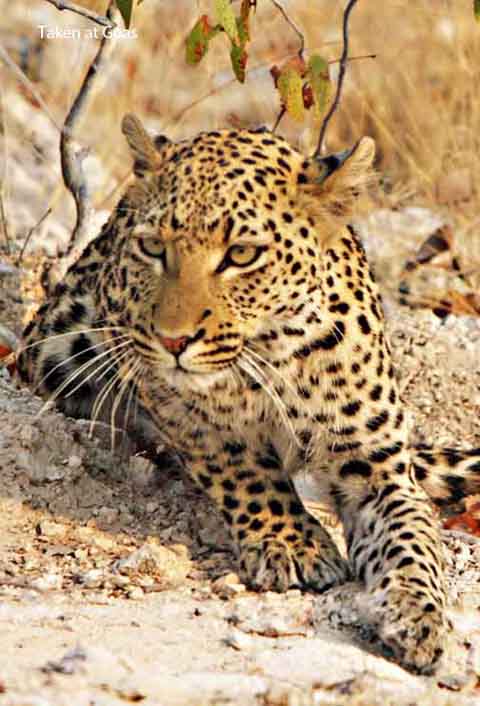
3.b. Does photography in these two very different parks provide any unique challenges for nature photographers?
In Kruger it can be waiting your turn at a sighting. We have often been the only ones or the first ones at a sighting. Making a noise and driving fast are sure ways to scare the subjects away so when we first see the animal we inch forward, taking a few photos, then move closer - it takes patience but the rewards are great.
In Etosha it’s positioning yourself for the best light. In both places the key is to watch what the non predators are doing. This will often give you an idea as to where the predators are. In March in Etosha I was rewarded with a shot of 3 leopards after watching 2 giraffes looking at the ground for 10 minutes. Be patient and try to position yourself in advance for the best light.
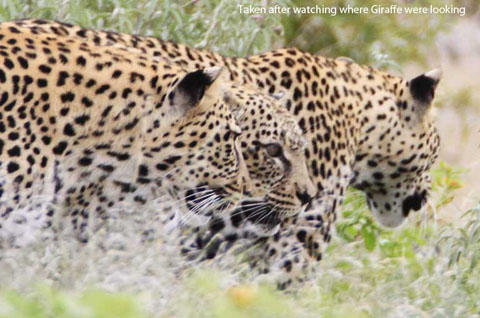
3.c. Before you go out on a photo safari each day have you planned your route or do you just drive and see what happens?
We always plan our route for the day, and seldom follow it through the entire day. We stay flexible to sightings and will stay as long as necessary - in March 2012 we spent 6 hours near Satara to get his photo.
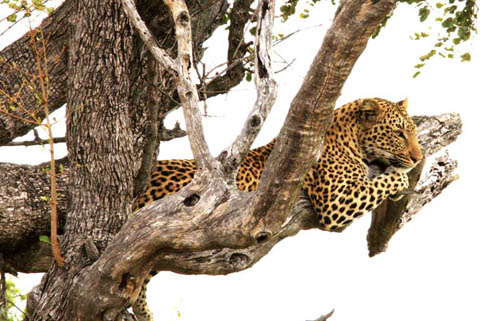
3.d. Do you make use of the sighting boards and sighting books at these parks to locate animals?
We always check the sightings boards and will adjust our plans based on input from the boards and other people we meet.
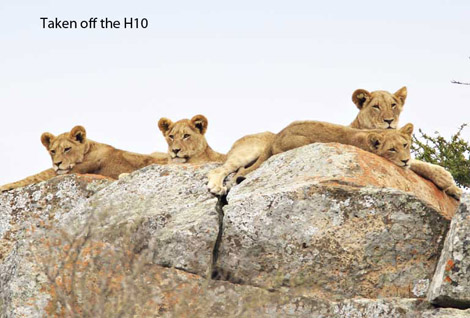
3.e. What would be your top photographic tips for photographers visiting these two parks?
Take your time, drive slowly, be alert and be patient.
4. You have also spent a lot of time photographing in US national parks. 40% of the visitors to K2K are from the USA but 60% are from Europe, Australia and Africa so I'm sure they would like to hear how the American parks compare to the African parks!
Sherry and I do spend a lot of time in our national parks particularly Yellowstone, Grand Teton and the Alaskan parks.
There are a lot of differences, examples of which are: In the African parks you must stay in your vehicle at all times.
In the U.S. the requirement is to keep a safe distance from the animals and not to interfere with their activities. For instance in Yellowstone it’s 100meters from bear and wolves and 25 from the rest.
In the U.S. parks you are allowed to hike and in fact camp in the backcountry without a guide. Attendance at an orientation as well as filing a trip plan is necessary. Without hiking it is estimated that you will only see about 2 or 3% of Yellowstone. Also animal jams in the American parks can be quite large. On the flip side you will find many more rangers keeping things moving, or at least trying.
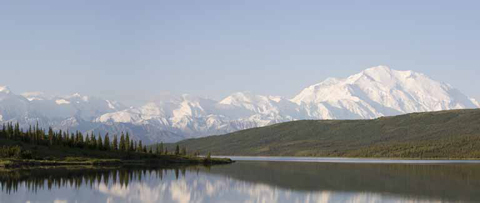
In the American parks tripods are used more often than sand bags. You will get much closer to animals in the African parks .
Bottom line is, there are significant differences but both are great for photography. Know the differences and make them work to your advantage.
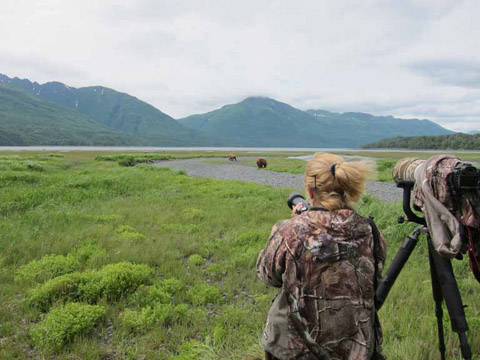
5. What has been your most memorable photo safari and why?
Mario that’s another hard one, but I think that it’s a combination of two trips.
In September of 2011 we were fortunate in being able to shoot the lion cubs with their reflections in the water at the Chudob water hole in Etosha.
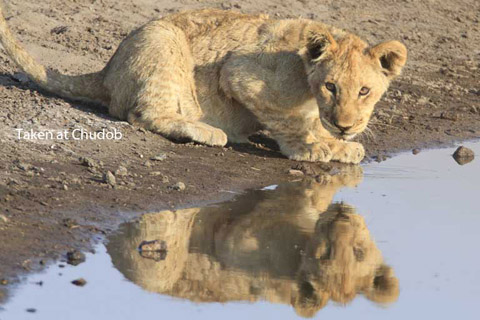
In March of 2012 we were back again and found the same cubs at the same hole and were able to take similar shots that show what 6 months does in a lion's growth.
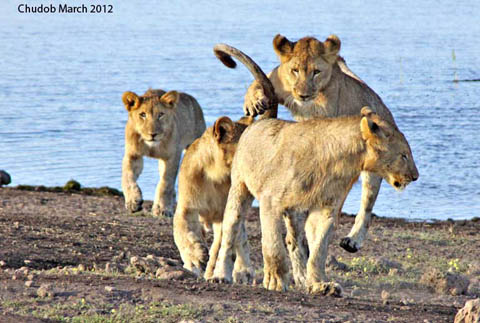
6.Have you had any close encounters with animals?
We try to avoid close encounters, but in Etosha we once had a mother elephant let us know that we couldn’t continue down the road until she and her calf were long gone. We were almost late getting back to camp.
At Namutoni this year we were leaving our bungalow and on the sidewalk was a smallish cobra with its hood out. We left him alone and he slid off but that got our adrenaline going!
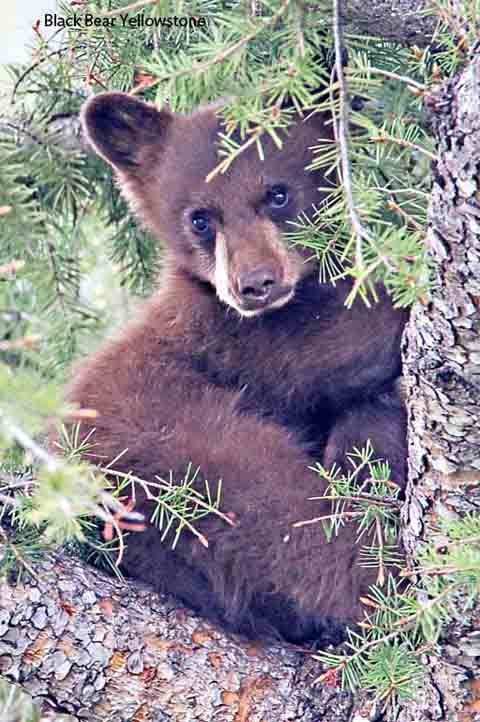
7. Some websites paint Africa as a very dangerous place. What advice would you give to someone who wants to come on an African photo safari for the very first time?
First I do not believe that southern Africa is excessively dangerous - we drove over 8,000 kilometers in March in three countries, without mishap. You take the same precautions you should take anywhere. Know where you’re going and don’t go where you shouldn’t. Be careful in crowds etc. One thing unique to Africa I’ve learned is to tip the parking lot security guards.
It makes life easier. I think if I were doing it for the first time I would use a guide, but try to find one who caters to photographers, and look for a company that doesn’t crowd 10 people into a vehicle! And then for the second visit you should have more confidence to do a self-drive safari.
8. Some photographers see Photoshop as a necessary evil and they would much rather be out shooting in the field than editing while others love post processing their images. You have some unusual 'manipulated' images so how do you feel about the digital darkroom?
I love Photoshop and do enjoy manipulating some photos. I firmly believe though that when you manipulate a photo, and I’m not talking about simple cropping, sharpening or lightening, you should let the viewer know. Without the digital darkroom some photos would be lost.
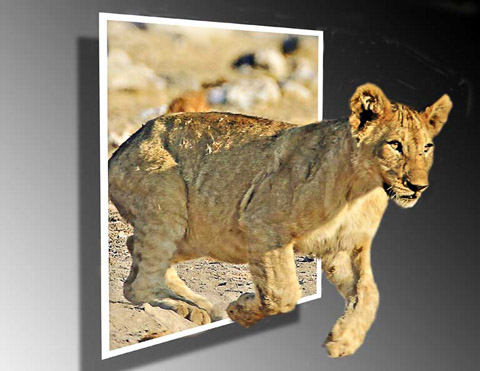
Most of what I know has been through the school of hard knocks but that being said I did take an intro to Photoshop course from one of your contributors, Joe McDonald and would highly recommend the course. Remember though that all the post processing in the world cannot fix a badly out of focus or poorly composed photo.
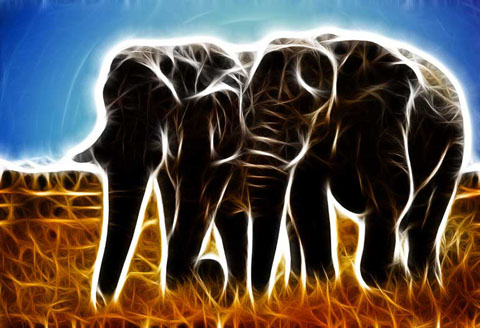
9. Bob, you obviously have a lot of photo gear that you transport between the USA and Southern Africa! Have you encountered any specific challenges or do you have any hints or tips for other photographers who may be anxious about losing or damaging their expensive cameras and lenses while travelling either on airplanes or in vehicles?
We do travel with a lot of equipment, several lenses including a 600mm F4 and at least 4 bodies. In addition we have a tripod, a couple of heads, window mount, sand bags, flash, remotes, chargers etc. The tripods, heads and sand bags go in my checked bags to which I apply TSA approved locks and pray!
To date everything has been fine. On the return, I always wrap my bags for extra security. This isn't allowed by TSA on the outbound leg. Those items critical to the trip, cameras, lenses, batteries, chargers and memory cards are carry on. With chargers I always bring two - one in checked luggage and one in carry-on.
As I always travel with Sherry, we are allowed two roll-aboards and two hand bags. I retired the canon hard case and now have a backpack that takes the 600mm, one small lens and two bodies wrapped in bubble wrap, some cards and chargers. Everything else goes into Sherry's roll aboard, including snacks as it's a long flight.
As a contingency plan I wear a photo vest with lots of pockets that will in fact hold two bodies, my 70-200 and 100-400mm as well as some accessories! Only had to use this option once on an SAA flight from Windhoek to Johannesburg as they wouldn't allow the roll-aboard. Most times on SAA the crew are super.
The airline doesn't want you to lose anything valuable so in that instance we took the cameras out and sent an almost empty bag gate-checked to Johannesburg and simply re-loaded it for the next leg.
As for driving, we try to never leave the car unattended with the camera equipment in it. If we stop at the market I go in and Sherry stays with the vehicle. We stop at the smaller plazas where the car can remain in sight as we travel around, and always move our equipment out of the car when we get to our destination. We never have camera gear in view, unless we are actually shooting.
This may sound like overkill, but to date we have not had one problem with lost or stolen gear. Although on our second trip, the baggage didn't make the turn in Washington and it was 4 days before it caught up with us in Kruger but we had our critical items with us.
By the way if you carry a lap top, this should never be checked in. I now use a tablet which fits in a pocket in my jacket.
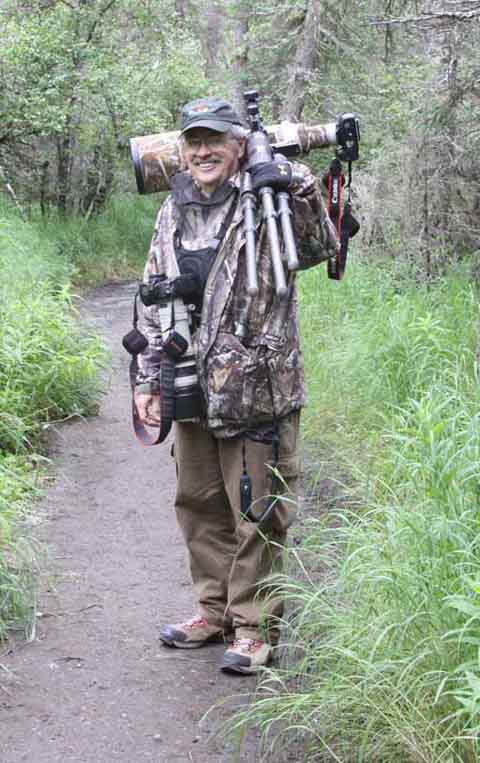
About Robert Shepardson...
Robert (Bob) Shepardson started his photography hobby in 2005 and since then he has visited the national parks of Africa and the USA many times.
His passion for photography and wildlife has enabled him to get some stunning shots in such a short time.
To see more of Bob's wonderful images please visit his SmugMug pages where he has sorted his images into folders for each African or American species to make searching easier for you.
All images on this page copyright Robert Shepardson
Return from Bob Shepardson interview to Interviews page
To make a safari rental booking in South Africa, Botswana or Namibia click here
"It's 764 pages of the most amazing information. It consists of, well, everything really. Photography info...area info...hidden roads..special places....what they have seen almost road by road. Where to stay just outside the Park...camp information. It takes quite a lot to impress me but I really feel that this book, which was 7 years in the making, is exceptional." - Janey Coetzee, South Africa
"Your time and money are valuable and the information in this Etosha eBook will help you save both."
-Don Stilton, Florida, USA
"As a photographer and someone who has visited and taken photographs in the Pilanesberg National Park, I can safely say that with the knowledge gained from this eBook, your experiences and photographs will be much more memorable."
-Alastair Stewart, BC, Canada
"This eBook will be extremely useful for a wide spectrum of photography enthusiasts, from beginners to even professional photographers."
- Tobie Oosthuizen, Pretoria, South Africa
Photo Safaris on a Private Vehicle - just You, the guide & the animals!













New! Comments
Have your say about what you just read! Please leave us a comment in the box below.